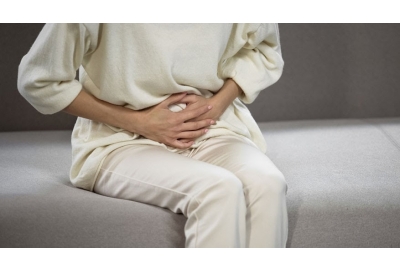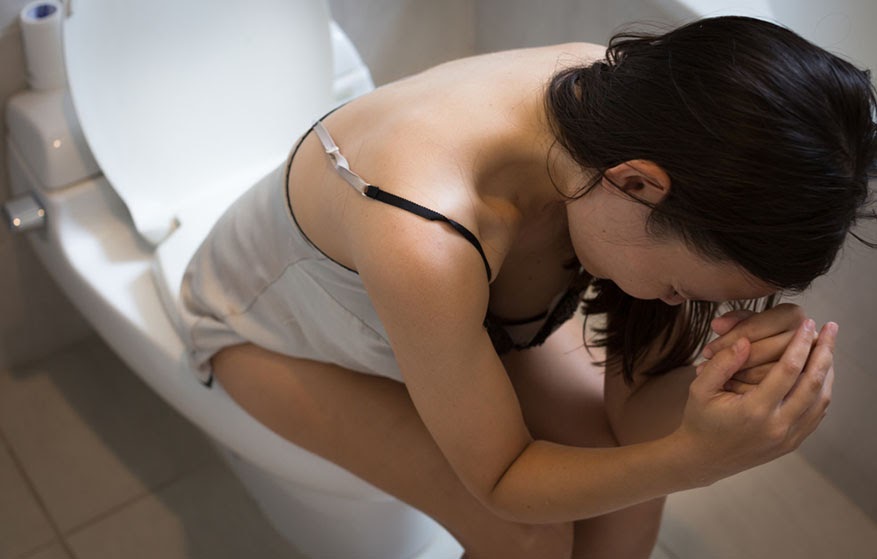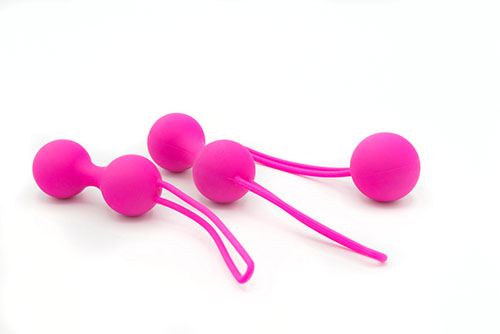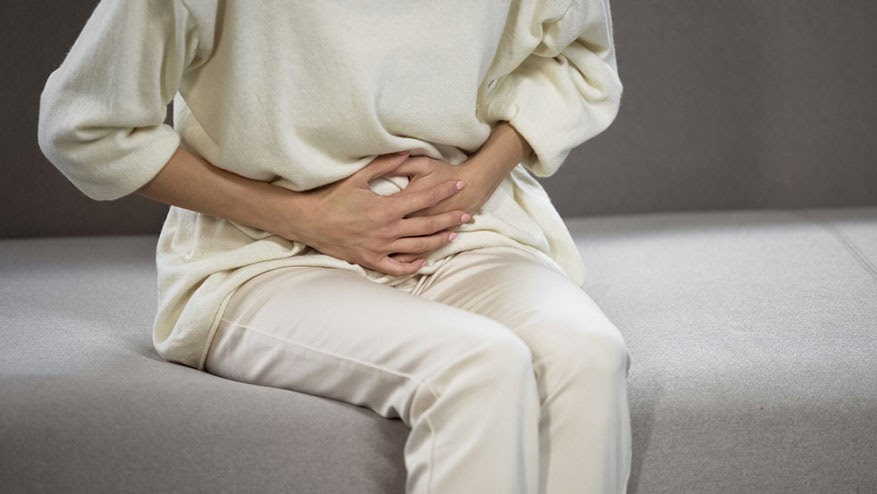
What Causes Bladder Spasms?

You’re living your life and minding your business when, suddenly, overwhelming cramps seize your bladder. You were fine two seconds before, but now you fear if you don’t make it to a bathroom immediately, you’re going to have an accident ASAP.
A variety of factors can cause bladder spasms. They're uncomfortable and even painful, and they often result in involuntary urination. In this guide, we demystify bladder spasms, explaining what they are and who is most at risk for them. Then, we delve into what causes bladder spasms and finally wrap up by discussing the various treatments your doctor might prescribe.
What are bladder spasms?
Typically, the bladder slowly fills with urine, and you gradually become aware of a more pressing need to go. Bladder spasms — technically called "detrusor contractions" — occur when this urge strikes suddenly and severely. The bladder muscles involuntarily squeeze, often without warning, causing an urge to release urine immediately. This urge can be so strong that people urinate involuntarily without being able to get to a bathroom first. The bladder spasms may feel like a painful cramp or a burning sensation, and may have some similarities to menstrual cramps or labor pains.
Who is more at risk for bladder spasms?
Bladder spasms are regularly common in children who haven't yet learned to control the urge to go and to urinate on command. Bladder spasms can also occur in adults, and you're more likely to get them if you:

- Are elderly
- Are pregnant or recently gave birth
- Are going through menopause
- Are obese
- Have diabetes
- Have a urinary tract infection (UTI)
- Have recently undergone lower abdominal or pelvic surgery
- Have bladder muscle damage due to a disease or injury
- Have a neurological disease
What causes bladder spasms?
Bladder spasms can be caused by various factors, which may be as straightforward as a change in diet or medication. An overactive bladder (OAB) and urge incontinence (so called because you feel the overwhelming urge to urinate) are a common cause of bladder spasms. An overactive bladder occurs when people get a sudden and overwhelming urge to urinate. This may lead to the involuntary loss of urine, which is known as urge incontinence.
Urinary tract infections (UTIs) are another common cause of bladder spasms. UTIs will usually be accompanied by other symptoms, such as bladder pain, pelvic pain, and burning sensations, especially when you urinate. When you have a UTI, you will likely pass small, frequent amounts of urine that may be cloudy and/or have blood in it.
Interstitial cystitis, known as bladder pain syndrome in layman’s terms, may also result in bladder spasms. The pressure and pain may range from mild to severe. The causes of interstitial cystitis are not known, and the condition is diagnosed when pain and other lower urinary tract symptoms have lasted for more than six weeks in the absence of infection or another clear cause.
Bladder symptoms may also be triggered by other causes, including:
- Diabetes
- Bladder cancer
- Recent surgery
- Muscle damage
- Bladder stones
- Irritation from a catheter
- Neurological conditions that affect the nerves that control the bladder, such as:
- Strokes
- Spinal cord issues
- Multiple sclerosis
- Parkinson’s disease
How to Diagnose Bladder Spasms
Your doctor will work with you to determine whether or not you have bladder spasms or another condition. And, if so, what the exact causes are of your bladder spasms. First, they will examine your medical history as well as any medications that you are taking. Some medications that are known to contribute to bladder spasms include bethanechol (urecholine), a chemotherapy drug called valrubicin (Valstar), and certain diuretic medications such as furosemide (Lasix) or hydrochlorothiazide.

They will also talk to you about your diet, since some caffeinated beverages and certain spicy and acidic foods can irritate the lining of your bladder and contribute to bladder spasms. Common culprits include alcohol, artificial sweeteners, coffee, chocolate, citrus fruits, pickled foods, soda, and tomatoes.
Then, your doctor will perform a physical examination, and they may also take a urine sample to check for signs of infections such as bacteria and blood. Once the doctor rules out infection, there are several other tests your doctor might order that can help diagnose bladder issues. Your doctor may measure things such as how much urine is left in your bladder after you go, the speed of your urination, and your bladder pressure. If these tests don't pinpoint a specific cause, your doctor might have you do some neurological tests to see if that might be the cause.
It's essential to see a doctor if you're experiencing bladder spasms, as there are many potential causes and you need to narrow it down in order to seek treatment. Your doctor will help you determine the cause(s) and craft a treatment plan based on your unique situation.
Treatments for Bladder Spasms
There are many different treatments your doctor may recommend in order to treat bladder incontinence, which vary depending on the causes you have identified. Here are some of the most common treatments for bladder spasms:
Bladder Training
If your bladder spasms are related to urge incontinence, then bladder training (sometimes called timed voiding) can help with it. In bladder training, you train yourself to either use the restroom at certain times of day, or to wait out the urge to go for a specified number of minutes. As your training goes on, you increase the amount of time you must wait to use the restroom, eventually working up to the point where you can hold it for a couple of hours while drinking a normal amount of fluids. It can take several weeks or months to achieve your goal time, but this approach can make a big difference for those suffering from urge incontinence.

Pelvic Floor Exercises
Weak pelvic floor muscles may contribute to bladder spasms and incontinence, and pelvic floor therapy can help. These muscles form a bowl shape that cradles the bladder and other organs down there, and may weaken as you age or due to life events such as giving birth or having surgery. Your doctor may recommend that you perform regular pelvic floor exercises to strengthen those muscles.
Basically, you'll tighten those muscles as if you're trying to stop a stream of urine or hold in gas. Finding these muscles can be a bit tricky — many people tighten their abdominal muscles instead — so your doctor might recommend using Kegel balls to identify the muscles and further strengthen them. Ensure to follow the instructions you have been given because tightening the wrong muscles or doing the exercises incorrectly can worsen your symptoms.
Learn More About Pelvic Floor Exercises

Lifestyle and Diet Changes
If your diet contributes to your bladder spasms, your doctor will likely have you cut out all potential trigger foods and give your body time to recover. Then, you might be able to slowly add them back in one at a time, in smaller amounts, to see how your body copes. In many cases, only a few foods are the ones that cause the most irritation, and you can eat the other ones just fine. In other cases, it might have accumulated over time. If you eat nothing but citrus fruits and tomatoes and drink a bunch of caffeine, that is definitely going to irritate your bladder, but you might be able to cope with smaller amounts mixed in with other, less-irritating foods.
How to Calm an Irritated Bladder
Decreasing your stress can also help manage your stress, which can make bladder spasms symptoms worse. Try to avoid stress triggers as much as possible and engage in relaxing activities such as aromatherapy, physical exercise, and meditation. Reducing your stress probably won't cure your bladder spasms, but it can ease the severity of your symptoms and prevent it from happening again.

Medication Changes
If your doctor determines that a medication has been causing your bladder spasms, they may have you stop taking it or switch to a comparable drug that isn't known to contribute to bladder spasms. If a UTI causes your bladder spasms, the antibiotics that your doctor prescribed will help reduce your bladder spasms by clearing up the infection that generates them.
Your doctor might also prescribe medications specifically intended to help with bladder spasms. This class of medications is called anticholinergics and includes tolterodine tartrate (Detrol LA), oxybutynin chloride (Ditropan), darifenacin (Enablex), oxybutynin (Oxytrol), trospium chloride (Sanctura XR), and solifenacin (Vesicare).
There's also an antidepressant called imipramine hydrochloride (Tofranil), which helps relax the bladder and reduces bladder spasms. If you have trouble emptying your bladder completely, your doctor might prescribe medicines called alpha-blockers, which help the bladder relax. Some examples of drug names include terazosin or doxazosin.
Electrical Stimulation
There are two types of electrical stimulation your doctor might recommend for bladder spasms. Transcutaneous electrical nerve stimulation, or TENS, refers to electrical stimulation through the skin. The device sends mild electrical pulses to the bladder through patches applied externally. While TENS is still being researched further, it’s believed that the electrical signals boost blood flow and encourage the release of hormones that block pain. When it comes to bladder spasms specifically, the electrical stimulation likely makes the muscles stronger via the increased blood flow, which helps reduce spasms and leakage in turn.
An electrical stimulation implant (InterStim) is placed under the skin to deliver electrical pulses to the bladder at regular intervals. Because it must be implanted beneath the skin, doctors usually only recommend an InterStim in cases of severe bladder spasms and other, less invasive treatments have all failed.

Botox
You probably associate this drug with smoothing out forehead wrinkles, but it has plenty of other medical applications as well. In small amounts, Botox acts to weaken or paralyze selected muscles by blocking specific nerves. In the case of an overactive bladder, it keeps the muscle from spasming at inappropriate times and triggering that urge to urinate. The Botox is injected directly into the bladder wall in order to target the muscles.
Bladder spasms, and the bladder leakage caused by them, can be embarrassing and unsightly, especially if they soak through your clothes. Since it may take time to diagnose the causes and for your treatment to start working, you might want to manage your symptoms in the short-term with incontinence products for women. Bladder leakage pads, such as Poise liners, fit discreetly under your clothes and catch urine before it can soak through your underwear, keeping you warm and dry. You might need to wear looser pants or skirts so the outline of the pad can’t be seen, but it’s so much better than wetting your pants while you wait for your treatments to start working.
Bladder spasms don't have to rule your life. If you've been struggling with them lately, talk to your doctor so you can get started on determining what causes your bladder spasms and how to treat them. Because of the many different possible causes, it's important to get a medical professional involved so you don't accidentally seek out a treatment that could potentially worsen your symptoms. There is hope, and you don't have to live with bladder spasms! For all you know, the solution might be as simple as switching medications or changing up your diet. Reach out to your doctor today to start getting relief, and don't forget that bladder leakage pads will help you manage symptoms in the meantime.
Shop All Incontinence Products
Image Credits
Motortion Films / Shutterstock.com
christinarosepix / Shutterstock.com
Rustle / Shutterstock.com
Dalaifood / Shutterstock.com
Tatiana Smirnova 17 / Shutterstock.com
christinarosepix / Shutterstock.com